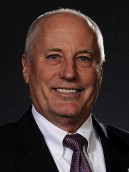
More than 90% of the world’s population develops third molars. Particularly in the western world, more people are maintaining their dentition in good health, and with the assistance of orthodontic treatment, good tooth alignment. This leaves limited room for the eruption of their wisdom teeth. As a result, one of the most common decisions faced by oral and maxillofacial surgeons is how to best manage these patients.
Through training and experience, our specialty is uniquely qualified to be the experts in the management of patients with third molars. Unfortunately, we live in an era when less qualified individuals and groups seek to assume the role of “experts” and policymakers when it comes to third molar decision-making. Whether less qualified health care providers, third-party policymakers, government officials, “patient advocates,” or members of the media, these individuals and groups present a potential threat to the health and well-being of many of our patients. As a specialty, we must never give up our role as the experts in third molar science, clinical decision-making, and patient management.
This issue of the Atlas of the Oral and Maxillofacial Surgery Clinics of North America is intended to promote an organized approach to the application of third molar science to the management of these patients. Fortunately, the past decade has moved us closer to better answering important questions about third molars and elevated the science of third molars in important ways. Consequently, we are certain or reasonably certain about many things concerning their behavior and the risks, benefits, and consequences of both retention and removal. I am pleased to have the opportunity to work with the articles’ writers, all of whom bring great experience and expertise to the author’s pen. As a result of their efforts, we have been able to put together a valuable resource for practitioners.
In organizing this volume, I attempted to include reviews of clinically relevant topics important to contemporary practice. Articles include a discussion of controversies surrounding the management of third molars, an overview of the factors that make third molars different from other teeth and why these differences have important clinical implications, a review of how to properly evaluate using a science-based approach, an article on decision-making that emphasized an organized approach, a look at the impact (pathology) associated with the retention of third molars, a summary of technical considerations in the surgical management of third molars, a discussion of strategies to minimize morbidity and improve recovery, and a look at complications as they may be associated with third molar surgery. I believe the information conveyed by the authors on these topics will make a difference in how surgeons approach third molars and their management.
In closing, I would like to thank my parents, who emphasized to me the value of trying to do things the right way; my colleagues, who have encouraged me along my professional journey; my Thursday morning men’s group, who have modeled the pursuit of truth and meaning; and most of all, my daughter, Ali, my son, Austin, and my wife, Christine, who have supported my involvement with organized oral and maxillofacial surgery and inspired me to be better than I otherwise would be.
Stay updated, free dental videos. Join our Telegram channel

VIDEdental - Online dental courses


